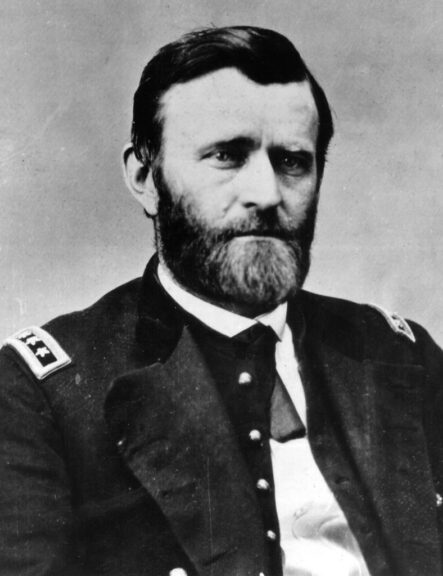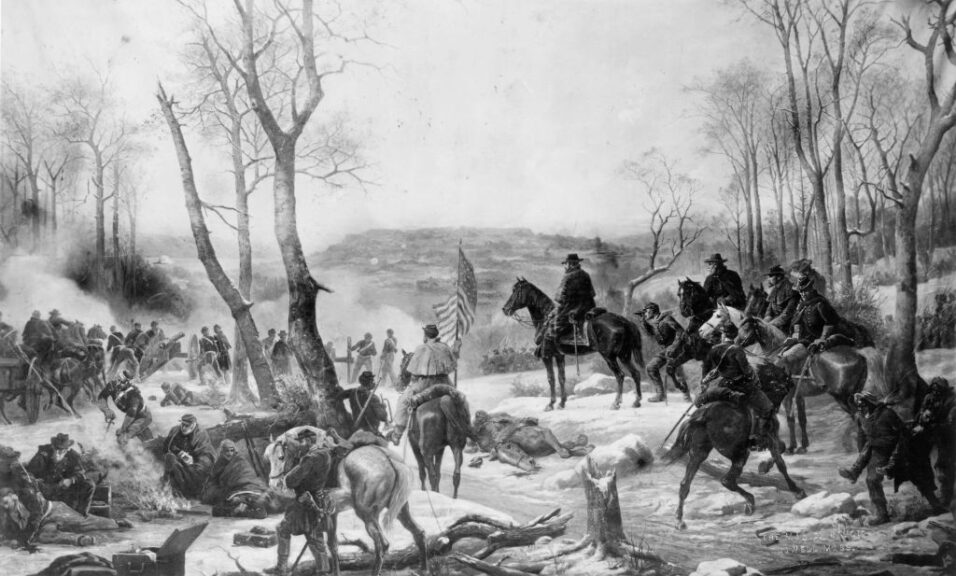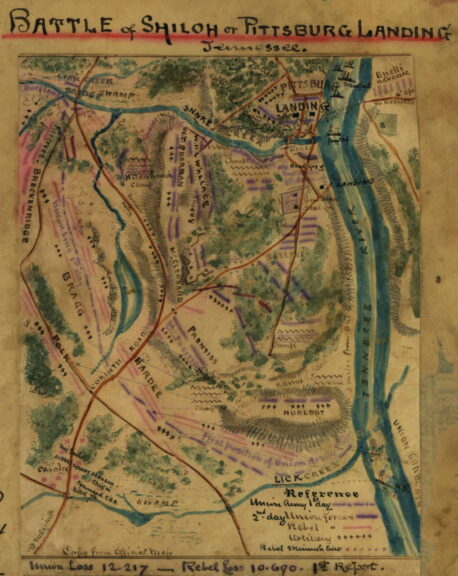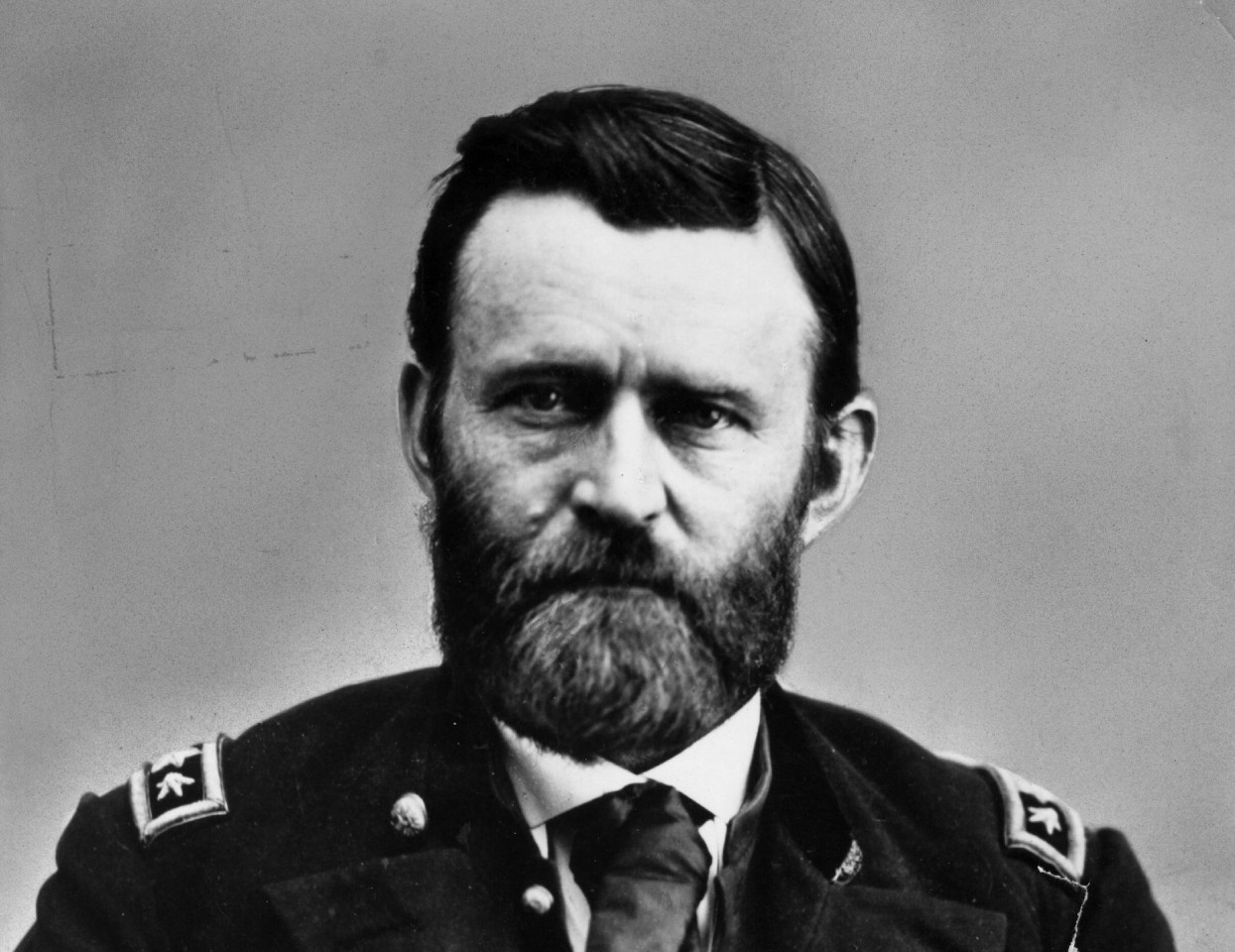Over the years, the United States has produced many remarkable generals and admirals, but only a few have stood out as world-class strategists and leaders of troops. As Veterans Day approaches on November 11, let’s remember and celebrate them. Here is my list of America’s finest 11 commanders.
Ulysses S. Grant, 1822 – 1885 (Civil War)
No U.S. military man in history rose from such humble beginnings and abject failure to be so successful and world-renowned as did Hiram Ulysses Grant. He was a simple man with simple tastes — for breakfast he ate vinegar-soaked cucumbers and he was so revolted by the sight of blood his meat had to be cooked extra-well. To those who knew of his pre-war string of bad luck and business disappointments, this cigar-chomping, taciturn soldier seemed a most unlikely savior of the Union. As one Northern journalist put it: “How profoundly surprised Mrs. Grant must have been when she woke up and learned that her husband was a great man.”

U.S. General Ulysses S. Grant. (Photo by National Archive/Newsmakers)
But greatness comes in many forms. And what Grant lacked in refinement (he once claimed he only knew two songs “one of them is ‘Yankee Doodle’ the other isn’t”) he made up for in drive and vision and understanding of the true character of this modern war into which the nation had foolishly plunged far better than most of his contemporaries. And he knew how to win battles. Perhaps his good friend Sherman summed up Grant the best when he offered that, although Grant wasn’t as smart or as knowledgeable of the intricacies of war as he, “I’ll tell you where he beats me though and where he beats the world. He doesn’t give a damn about what the enemy does out of his sight, but it scares me like hell!”
Grant first rose to fame in the Western Theater in February 1862 by capturing Fort Henry and then Fort Donaldson, famously telling the surrounded Confederates who asked for terms, “No terms except unconditional and immediate surrender will be accepted.” Northerners cheered, offering that the “U.S.” in Grant’s name (a clerical error upon his arrival at West Point) stood for “Unconditional Surrender.”

7th February 1862: General Grant (1822 – 1885), right of center, on horseback, watches his troops attack Fort Donelson, Tennessee. (Photo by MPI/Getty Images)
He then moved to confront the main Confederate army at Corinth, Mississippi, which was a vital Southern railroad hub. But in April 1862 the rebels attacked first, hitting him hard at his encampments at Pittsburg Landing on the Tennessee River. For two days the brutal fighting raged around the little Shiloh church, from which the battle gets its name. The casualties, ten times those of First Bull Run, shocked all engaged. Grant, though surprised by the sudden onslaught, kept his cool and called in reinforcements.

UNITED STATES – CIRCA 1862: The Battle of Shiloh, also known as the Battle of Pittsburg Landing, was a major battle in the Western Theater of the American Civil War, fought on April 6 and April 7, 1862, in southwestern Tennessee. Hand Drawn Map (Photo by Buyenlarge/Getty Images)
After the first day’s battle, Grant was sitting alone contemplating the horrors he’d witnessed and how close to disaster he’d come, when Sherman approached him. “Well, Grant,” he said. “We’ve had the devil’s own day, haven’t we?” Grant replied: “Yes. Lick ‘em tomorrow, though.” And he did. But the Civil War had entered a new and far bloodier phase.
Grant’s objective throughout the rest of 1862 into 1863 was the capture of Vicksburg on the Mississippi, the so-called “Gibraltar of the South.” Here the perseverance that would make Grant the most effective commander of the war was on display. He tried several lines of advance to get at the citadel city, only to be turned back. After one failed attempt, a Confederate asked a Union prisoner: “Hasn’t that old fool Grant tried this ditching and flanking five times already?” The Yankee answered: “Yes, but he’s got thirty-seven more plans in his pocket!”
Finally in April 1863, in a risky operation, Grant sent Union gunboats under Adm. David D. Porter to run right under the teeth of rebel batteries on Vicksburg’s bluffs overlooking a hairpin turn in the Mississippi while he marched south down the west bank of the river and awaited the navy’s arrival. He then ferried his army across the wide river and marched his mobile army inland through the Mississippi hinterland, fighting a series of flanking battles that drove the Confederates back into their entrenchments on the river. Grant then laid siege to the city.


